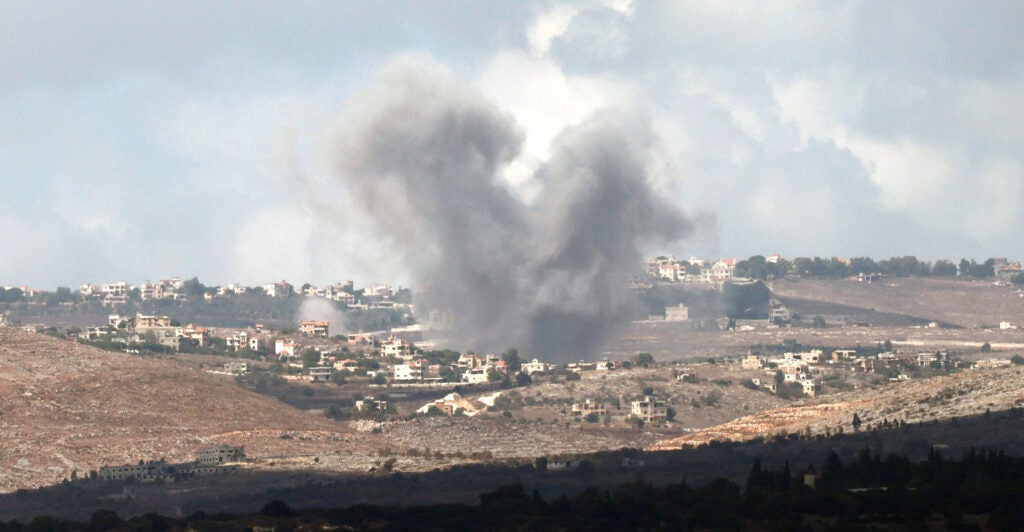Israel’s attacks in Lebanon are part of a renewed effort to reestablish deterrence against Hezbollah.
Since October, Israel has been unwilling to escalate on its northern border while the Israeli Defense Forces are engaged in kinetic operations to destroy Hamas and rescue its hostages in the Gaza Strip.
Moreover, Israel has also been unable to pursue a strategy that effectively responds to Hezbollah’s aggression as the Biden-Harris administration has deterred Israel from addressing any one of the regional threats by tying its hands in Gaza.
However, the situation has changed in recent weeks as the IDF has effectively defeated Hamas as a military force and is now focused on eliminating any remaining resistance and rescuing the hostages.
Moreover, for months, Hezbollah leader Hassan Nasrallah has linked deescalation in Israel’s north with a cease-fire in its south. Yet, as the Biden-Harris administration acknowledged last week, any negotiations with Hamas are unlikely to bear fruit through the remainder of this administration.
Thus, for Israel, the only way to change the status on its northern border that will allow 80,000 of its residents to return to their homes is to bring the war—which has been fought almost exclusively on Israeli territory—to Lebanon.
In July, following an attack on a soccer field in the Israeli Druze village of Majdal Shams that killed twelve Druze children, Israel responded on July 30 by killing Hezbollah military commander Fuad Shukr, who was responsible for growing the terrorist organization’s rocket arsenal from 15,000 to 150,000 rockets and was wanted by the U.S. for his role in the bombing of the Marine barracks in Beirut in 1982 that killed 241 American servicemen.
That strike was part of a broader offensive that saw targeted killings of senior Hamas members, including Mohammed Deif, chief-of-staff to Yahya Sinwar, in an airstrike in Rafah, and Ismail Haniyeh, the organization’s leader, in an explosion in Tehran, also on July 31.
Last week, in a clear sign of the Israeli government’s new focus on the Hezbollah front in its multifront war, Israel’s Cabinet voted to include the safe return of its northern residents to their homes as a new war aim.
This is the first time the government has a stated policy on how to address the northern front since, unprovoked, Hezbollah began firing rockets into Israel on Oct. 8, in support of Hamas’ attack on Oct. 7. The message that Israel is prepared to escalate militarily was also relayed in person to U.S. envoy Amos Hochstein in meetings with Israeli Prime Minister Benjamin Netanyahu and Defense Minister Yoav Gallant in Israel.
Within hours of the government’s vote, thousands of pagers exploded across Lebanon, maiming and killing hundreds of Hezbollah operatives. The following day, their walkie-talkies exploded, killing dozens and injuring hundreds more.
Shortly thereafter, a senior group of Hezbollah leaders met in Beirut, who were promptly eliminated by Israeli airstrikes, including Ibrahim Aqil, the leader of its elite Radwan force. The U.S. had previously offered up to $7 million for information on Aqil’s whereabouts in connection with his role in the 1983 bombing of the U.S. Embassy in Beirut.
Since Thursday, Israel has conducted numerous waves of airstrikes targeting Hezbollah infrastructure across Lebanon, including in the Bekaa Valley, a Hezbollah stronghold.
Some of those sites are civilian homes, where Hezbollah stores rockets and drones to attack Israel. Hezbollah is responding with continued rocket barrages, including escalating to hit Haifa, Israel’s third-largest city. Recent attacks have featured long-range rockets, the first of the war, hitting several Israeli communities in Judea and Samaria and even targeting Tel Aviv.
Israel’s attacks are intended to knock Hezbollah off-balance by disrupting its command-and-control capabilities, degrading its rocket stockpiles and debilitating its ground forces. The objective is to convince Nasrallah to deescalate and pull back its forces from the Israeli border.
Should he accept, expect to see a tactical retreat that allows both sides to claim partial victory: Hezbollah joined Hamas’ fight against the Jewish state for nearly a year and survived, and Israeli residents are able to return home. (Whether they choose to is a different matter.)
Should Nasrallah refuse, the IDF is preparing the battlefield for a much larger operation.
